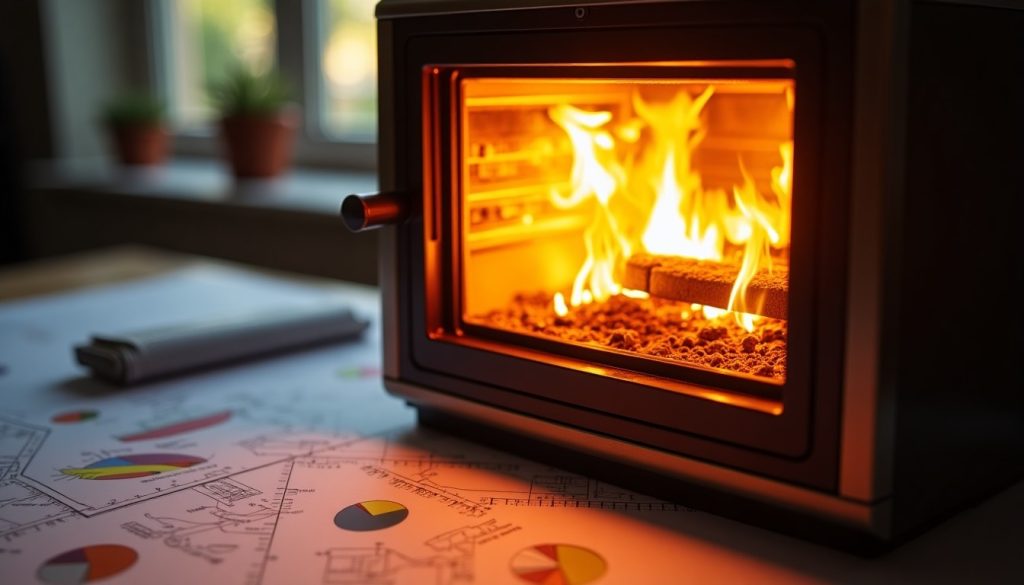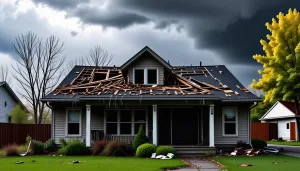When considering the cost of replacing a furnace, numerous factors come into play that can significantly influence the overall price. Understanding these variables can help homeowners plan and budget more effectively for this essential HVAC upgrade.
One primary factor affecting the total cost is the type and efficiency of the furnace. High-efficiency furnaces, which are often more expensive upfront, can reduce long-term heating costs through their improved energy performance, leading to potential savings on utility bills. It’s essential to weigh the immediate cost against the potential for reduced heating expenses over time.
An equally important factor is the size and output capacity of the furnace required for your home. The capacity, measured in British Thermal Units (BTUs), should match the heating demands of your space. A furnace that’s too small will struggle to meet heating requirements efficiently, potentially resulting in higher operational costs and decreased comfort levels. Conversely, an oversized furnace may short cycle, leading to premature wear and inefficiency. Consulting with an HVAC professional can help determine the appropriate size for your home based on square footage, insulation quality, and local climate conditions.
Geographical location also plays a pivotal role in furnace replacement costs. Prices for both equipment and labor can vary widely by region due to differences in demand, regulation, and cost of living. For instance, metropolitan areas might see higher installation costs due to increased labor rates, while rural areas might have limited availability, affecting pricing and scheduling.
The complexity of installation can further sway the total cost. Any modifications to ductwork, electrical systems, or home structure to accommodate a new furnace may require additional labor and materials. Older homes might need these upgrades to ensure safety and maximize the new furnace’s efficiency.
Homeowners should also consider the cost of permits and inspections, which may be required by local building codes. Failure to comply with these regulations can result in fines or future difficulties during home sales, potentially adding unforeseen costs.
Below is a simplified table outlining some of the key factors and their potential impact on replacement costs:
| Factor | Impact on Cost |
| Furnace Efficiency | Higher efficiency may increase upfront cost but lower long-term heating costs |
| Furnace Size | Necessary to match with home’s heating needs; incorrect sizing can increase costs |
| Geographical Location | Varies due to regional labor and material costs |
| Installation Complexity | More complex installations increase labor and material expenses |
| Permits and Inspections | Regulatory compliance may add to the cost |
By being mindful of these factors, homeowners can make more informed decisions about furnace replacement, balancing upfront costs with long-term benefits to enhance home comfort and efficiency. Engaging with experienced HVAC professionals can also provide valuable insight and ensure that the selected solutions meet both performance and budgetary needs.
types of furnaces and their prices
When choosing a new furnace for your home, it’s important to understand the various types available and their corresponding price ranges. Each furnace type comes with unique features that impact initial purchase costs as well as long-term heating expenses. Here’s a breakdown of the most common furnace types and what you might expect to pay for each:
-
Gas Furnaces:
Gas furnaces are among the most popular choices for home heating due to their efficiency and relatively low operational costs. They run on natural gas and offer rapid and effective heating. The initial cost of a gas furnace typically ranges from $1,200 to $2,400, depending on the brand and efficiency level. Highly efficient models (with AFUE ratings of 90% and above) can command higher prices but offer significant savings on heating costs over time. Installation costs can vary, generally adding $1,000 to $3,000, depending on labor rates and installation complexity.
-
Oil Furnaces:
Ideal for areas where natural gas is unavailable, oil furnaces provide reliable heat even in colder climates. The price for these units usually ranges from $1,500 to $2,500. Installation might add an additional $2,000 to $5,000, factoring in the need for an oil storage tank and potential ventilation adjustments. While oil furnaces are generally less efficient than gas models, they are still a mainstay in many regions due to their durability and strong heating capabilities.
-
Electric Furnaces:
Electric furnaces are often less costly upfront, with prices between $500 and $2,000. Installation tends to be more straightforward and may cost between $1,000 and $2,500. These furnaces are highly reliable and have lower maintenance needs. However, their operating costs can be higher due to electricity prices, making them more suitable for milder climates or as supplementary heating. Consider long-term energy expenses when evaluating this option even if it appears economical initially.
-
Propane Furnaces:
Propane furnaces are similar to their gas counterparts but run on propane, a preferred choice in areas lacking natural gas accessibility. These systems generally cost between $1,400 and $3,000. While more expensive to operate compared to natural gas, they offer excellent heating efficiency. Installation costs range from $1,000 to $2,500. Homeowners should consider the availability and cost of propane locally when making their decision.
-
Dual Fuel Systems:
A dual fuel system combines an electric heat pump with a gas furnace for enhanced energy efficiency. These systems are excellent for areas with varying seasonal temperatures, optimizing energy use between electricity and gas depending on the outdoor temperature. Prices for dual fuel systems can start at $2,500 and go up to $6,000. Installation can be more complex, ranging from $3,000 to $6,000, necessitating professional evaluation to ensure optimal compatibility and efficiency.
-
Geothermal Heat Pumps:
Though not a traditional furnace, geothermal systems provide heating through the earth’s natural heat, making them extremely efficient and eco-friendly. The installation price can be prohibitive—often between $10,000 and $30,000—but operating costs are significantly lower than conventional systems. These systems also add value with cooling capabilities and long-term durability, making them a worthy investment for environmentally conscious homeowners.
Selecting the right type of furnace hinges on several factors, including your home’s heating needs, budget, and regional climate conditions. Making an informed decision can help balance upfront investments with potential long-term savings on energy expenses, while ensuring comfort and efficiency in your home. Consulting with an HVAC expert can further aid in selecting the best system tailored to your specific situation.
cost breakdown: materials and labor
To fully comprehend what contributes to the overall expense of a furnace replacement, it is crucial to understand the breakdown of costs related to both materials and labor. These elements, combined, define the financial landscape homeowners encounter when investing in a new furnace system.
The materials’ cost is heavily influenced by the type and model of the furnace chosen. As discussed, different furnace types have varied price ranges, with factors such as energy efficiency and brand reputation playing significant roles in determining the cost of the unit itself. High-efficiency models, though initially more expensive, provide potential savings on heating costs over their operational lifespan. Besides the furnace itself, additional necessary materials might include ductwork, piping for gas or oil lines, electrical components, and possibly a new thermostat. These can add substantial amounts to the overall cost, especially if new infrastructure or significant modifications are required to accommodate the new unit.
Labor costs are another significant portion of the replacement budget. The complexity of the installation directly impacts labor expenses. For standard furnace replacements where the infrastructure largely exists, labor costs could be more straightforward and less burdensome, usually falling within a predictable range. However, installations requiring extensive alterations, such as updating old ductwork or implementing new venting systems, demand more time and expertise, thus increasing labor charges. Installers must ensure compliance with all safety and building codes, which can also influence the time and effort required.
Additionally, geographical location will affect labor costs, with urban areas generally commanding higher rates due to the higher cost of living and different market dynamics compared to rural locales. Furthermore, if the installation requires specialized skills or additional subcontractors, such as electricians or pipefitters, labor costs will inevitably rise.
When planning for a furnace replacement, acknowledging these cost components is essential. Understanding that both materials, from the furnace to the smallest fitting, and labor, encompassing all facets of the installation process, are integral to the total expenditure, empowers homeowners to budget realistically. Engaging multiple quotes from reputable HVAC professionals can offer insights into competitive pricing and ensure that the proposed costs align with market standards, leading to an investment that maximizes comfort, efficiency, and financial value.
tips for saving on replacement costs
Saving on furnace replacement costs is a key concern for many homeowners, especially considering the significant investment involved. Luckily, there are several strategies you can employ to reduce expenses without compromising on quality or efficiency.
First, timing your purchase and installation can lead to substantial savings. HVAC companies often offer promotions during their slow seasons, typically in spring and fall, when demand for heating and cooling services dips. Take advantage of these periods to shop around, as you are likely to find sales or discounts on both furnaces and installation services. Additionally, manufacturers occasionally provide rebates for new, high-efficiency models, which can offset the initial higher purchasing cost.
Another practical tip is to research and compare different brands and models. While a top-of-the-line furnace may seem appealing, you might find a similar model with slightly less advanced features at a much lower cost. Look for furnaces that balance efficiency with affordability. Consulting online reviews and energy efficiency ratings can be helpful in making an informed decision that fits your budget and meets your heating needs.
Consider potential financial incentives for energy-efficient upgrades. Local utility companies and government programs frequently offer rebates or tax credits for installing efficient HVAC systems. These incentives not only lower the upfront cost but also promote long-term savings through reduced heating costs, making high-efficiency options more accessible.
Performing necessary preparations before the installation can also reduce costs. Ensure the installation area is accessible and clear of debris, as this minimizes installation time. Additionally, routine maintenance of your existing HVAC system, even if you’re planning a replacement, can help prevent unforeseen issues during the installation process that could incur extra labor charges.
Lastly, seek quotes from multiple HVAC professionals. Obtaining a range of estimates allows you to compare pricing and services, ensuring you receive the best value for your investment. Make sure the quotes are detailed and clearly outline what is included in the cost, such as permits, removal of the old unit, and any additional materials required. Negotiating with contractors based on competitive quotes can sometimes further reduce the total expense.
By implementing these strategies, you can manage furnace replacement costs effectively, ensuring your home remains comfortable and energy-efficient without straining your finances.
frequently asked questions about furnace replacement
When considering furnace replacement, homeowners often have questions that can impact their decision-making process significantly.
One common question is how long a furnace typically lasts. Most furnaces have a lifespan of about 15 to 20 years, depending on their maintenance and usage. Regular servicing and cleaning can prolong a furnace’s operational life and ensure it runs efficiently, potentially saving on heating costs.
Many homeowners also ask whether upgrading to a high-efficiency model is worthwhile. While these models come with higher upfront costs, they often pay for themselves over time through lower utility bills due to their superior energy use. It’s important to consider your long-term stay in the home and local energy prices when deciding if the investment is right for you.
Another frequent inquiry involves permit requirements for furnace replacement. Generally, local codes mandate permits to ensure safety and compliance with current regulations. Not only does having the proper permits prevent legal issues, but it also ensures the installation is inspected, reducing future risks.
People often wonder if they can perform the installation themselves to cut costs. While some handy homeowners may be tempted, professional installation is strongly recommended. HVAC systems involve gas lines, electrical components, and precise configurations, all of which require expertise to ensure safe and optimal operation. Furthermore, warranties might be voided by installing the unit without professional assistance.
Questions about financing options are also common. Many HVAC contractors offer financing plans to alleviate the immediate financial burden of a new furnace. Additionally, exploring manufacturer or government rebates and incentives can lighten the overall expense, making high-efficiency models more attainable.
Addressing these common concerns can significantly ease the process of replacing a furnace, enabling homeowners to make informed and confident decisions that best suit their homes and budgets.
In conclusion, replacing a furnace involves numerous considerations, from the type and efficiency of the unit to installation complexities and potential cost-saving strategies. By understanding these factors and seeking professional guidance, homeowners can make informed choices that promote comfort, efficiency, and financial prudence. Investing in the right furnace can lead to substantial long-term benefits, keeping energy costs manageable while ensuring a warm, comfortable home environment.





